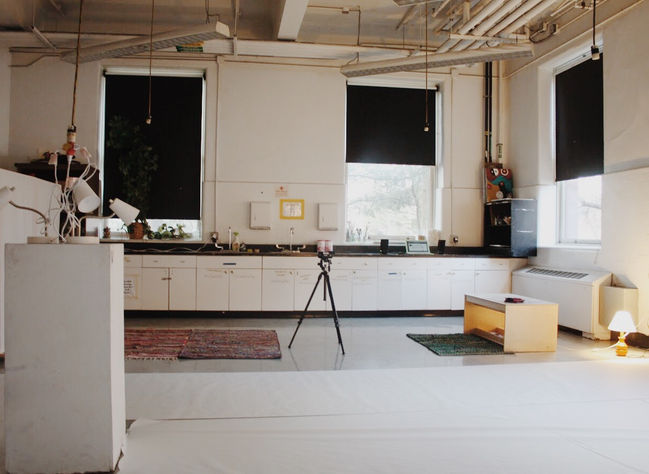Art Education Philosophy
As an art educator I believe in the importance of the environment, experimenting with loose parts, and exploring the senses in art. The way you set up the environment of the art space will influence the movement of the class. The placement of materials in the environment is important so that they are accessible to students in any moment and have freedom to use materials they need in a given moment. I strive to create a space that allows children to use their entire body. I believe in breaking free from the standards of the table and chair and creating art that hangs from the ceiling, is drawn on the floor, or is captured through performance. The art space does not need to be confined to one specific room. Instead, for example, art can be taken outdoors where children use objects found in nature to create their art.
In an art space, materials are not limited to the classic art tools and supplies. “Loose parts” or "found objects" are everyday objects that are all around us in our natural environment, home setting, or social life that we can transform into an art material. Children are makers in the classroom and should have the freedom to express their ideas and visions with “loose parts” that are not limited to the expected or standard materials. Encouraging students to use loose parts opens the door to two-dimensional and three-dimensional creations. When a student utilizes loose parts or found objects their creativity is expanded not only to what they can make, but how they can make it. When a child opens this door they also begin to explore their identity. They learn what “loose parts” they are drawn to and how they can express themselves and their ideas through these materials. In my art studio, young artists will not be confined to paper, pencils, brushes, paint, clay, and other conventional art materials. But instead, they will learn how to use spices, foods, flowers, leaves, branches from a tree, the scraps their family members were about to throw away, the countless items in their recycling can, and just about anything and everything they see in their daily lives to be transformed into an artistic creation.
Lastly, in my art classroom I strive to create an atmosphere where individuals can explore all of the senses. I believe it is imperative to deconstruct the hierarchy of the senses and equalize the importance of all of the senses, instead of simply promoting visual senses. When you open the door to touch, sound, smell, and taste, you begin to open the door to the endless potential of art. How can we explore sound? How can art be transformed into smell? What textures do we feel and create in art practice? What artists do we see exploring the senses in their art today? These questions become areas of exploration and spark an art dialogue. I want to break down the doors of what art education can be so that young artists can be playful and find their identity through their art practice. Young artists will discover new ways to create, move, grow, imagine, interact, share, build, and communicate when they have the freedom to create art with all different materials and all of their senses.





